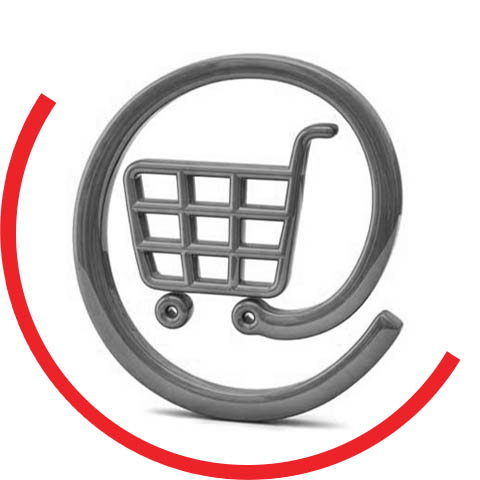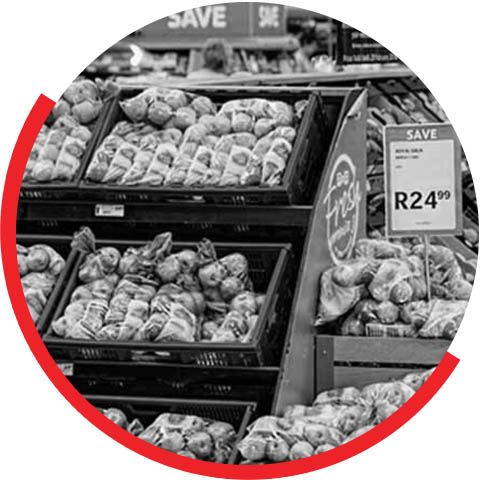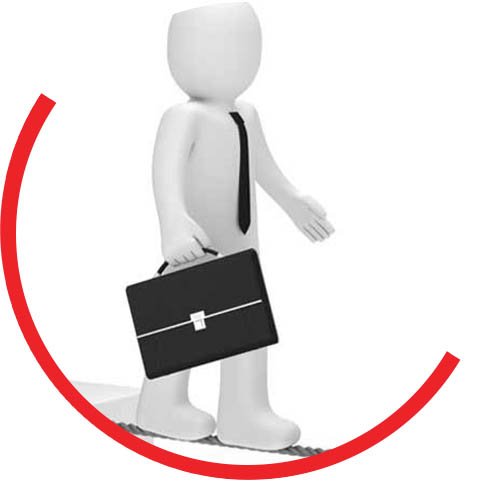Today’s shopper, thanks the internet, has better product knowledge than before, and sometimes even more than the salesperson! The readily available web information, blogs, social media, expert review sites, retail, and e-commerce sites have all come together to make a net-savvy customer fully loaded with knowledge.
Is this an opportunity or a threat? It all depends, on how you wish to use this change. There is a limit to how much a salesperson can do on his or her own, but technology can help multiply this expertise many-fold, especially while talking to the “informed customer” in this internet age, turning this into a big opportunity. Let us see how this can be made happen.
Most of the retailers today have embraced multi-channel commerce, which is a great sign. Now they can serve the customers in their channel of choice. Let’s dive deeper into challenges, benefits, and the technologies related to Omni-Channel Commerce.
Today’s shopper, thanks the internet, has better product knowledge than before, and sometimes even more than the salesperson! The readily available web information, blogs, social media, expert review sites, retail, and e-commerce sites have all come together to make a net-savvy customer fully loaded with knowledge. Is this an opportunity or a threat? It all depends, on how you wish to use this change. There is a limit to how much a salesperson can do on his or her own, but technology can help multiply this expertise many-fold, especially while talking to the “informed customer” in this internet age, turning this into a big opportunity. Let us see how this can be made happen.
Most of the retailers today have embraced multi-channel commerce, which is a great sign. Now they can serve the customers in their channel of choice. Let’s dive deeper into the challenges, benefits, and technologies related to Omni-Channel Commerce.
Challenges in multi-channel commerce, viz.,
- Siloed Operations between channels: As new technologies like IVR, e-commerce, m-commerce, mPoS, Kiosks, Beacons, etc started to emerge, retailers started to invest in these technologies in isolation. But with this piecemeal approach, the operations for each of these channels happen in isolation and creates plenty of operational challenges that need to be addressed.
- Duplication of effort and inventory: With isolated systems, come dedicated inventory needs. A retailer offering an e-commerce channel will usually show the inventory from a specific warehouse or a partial inventory from a specific warehouse. This leads to duplication of effort and inefficient utilization of the inventory.
- Poor knowledge of customers shopping in multiple channels: As each channel has its own IT system, there is duplication of the customer data, their preferences, behavior, and shopping patterns. The retailer will not be able to extract the maximum value from its knowledge of the customer across channels. The customer will also not get a uniform experience across the channels, leading to poor customer engagement and customer satisfaction.
- Inability to integrate loyalty, promotion, and other customer-facing programs: With different sales channels running in silos, accumulation and redemption of the loyalty points across channels becomes impossible or will be extremely difficult. This potentially leads to excess redemption by the customers beyond their limit or poor customer experience as they may not be able to redeem their loyalty across channels. Offering consistent promotions across channels becomes a manual process or becomes very difficult to execute at scale.
- Management inefficiency at the back-end, need for more people and processes: With each channel running on isolated systems, naturally involves additional duplication of human resources, software, IT infrastructure, logistics, and processes. In the pursuit of offering convenience to the customers, retailers run into huge costs and inefficiencies which do not provide them the additional ROI that retailers are looking for.
How Omni-Channel Commerce addresses them
Primarily address all shortfalls listed above by:
- Optimize inventory and management resources: With a single inventory view feature of the Omni-Channel solution, the retailer needs to hold significantly fewer inventories to achieve an equal amount of sales as compared to a multi-channel solution. With fewer systems, inventory, and processes to deal with will also result in lesser management resources, hence resulting in cost reduction.
- Click-in-store (to enable inventories from other locations): Today, if a customer wants a product that is not available at the store, they are currently shopping, they have to rely on making multiple phone calls to find out which another nearby store has it in stock. But with a single inventory view online or via mPoS, product availability across locations becomes a reality, which will ensure that the customer in-store buys the item with the same retailer.
- Brick & Deliver (shop at the store and deliver at home): For large appliances and fragile goods, the customer might want to shop and pay at the store, but would like the order to be delivered at their doorstep. With Omni-Channel solutions, these features can be built into the system rather than being a manual offline process which is inefficient and has multiple breakdown points.
- Click & Collect (shop at home and collect at the store): In Omni-Channel Commerce, as thee-Commerce/m-Commerce channels are integrated with stores, it becomes possible for a customer to order online and request that the order be kept ready at a specific store where the customer can come later to collect it. Not only does this offer great convenience to the customer, but also greatly increases the sell-through rate and reduces the need for additional inventory at an e-commerce fulfillment center.
- Ability to track inventory and customers across channels: To improve the sell-through rate, the ability to have a single inventory across the channels is very important. With a single inventory view, goods need not be blocked to a single channel where the demand may not exist. Similarly, by integrating the channels, the retailer can have a 360-degree customer view and be able to provide a seamless experience to the customer.
- Integrating channels, viz. Brick N Click: Multi-channel is a great start, but to maximize the returns integrating these channels either via middleware or via digital business platforms (like Brick and Click from Sonata Software) is imperative.
- Ability to learn from the online experience by in-store staff: With 360-degree customer view, once a customer walks into the store and identifies themselves, the in-store staff will be able to see their browsing history, past purchases and will be able to make relevant recommendations to the customer resulting in superior customer experience.
- Provide uniform experience and information to customers across physical and digital channels: With Omni-Channel solutions, the Product Information Master(PIM) will be the single source of truth, which will help the product information to percolate down to all other channels, hence providing uniform information to the customer. Single inventory views will also ensure that the customer has a reliable view of the availability, regardless of their channel of interaction.
Challenges in multi-channel commerce, viz.,
- Analytics to improve sales, customer loyalty, and experience: Digital technologies like Mobile, Social capture a lot of customer interactions over the internet. This information is vast and using analytics, retailers can analyze such data and convert it into actionable insights. Digital technologies such as the cloud, offer the ability to scale up the IT systems on-demand with low Capex. All these technologies will help engage the customer better and improve sales.
- Enabling social media integration to capture customer preferences, encourage word of mouth and get feedback: To get a 360-degree customer view, it is essential to capture the customer information available on their respective social media activities. By encouraging customers to share their shopping experience and product reviews and recommendations using their social accounts, will help to increase referral sales. Omni-Channel solutions make this social engagement and analysis possible.
- Empowering in-store sales with better customer knowledge and promotions: Using technologies like Beacon, retailers can offer targeted proximity marketing which can increase the conversion rate of the footfalls. Also, the targeted marketing ensures that the customers are not annoyed with irrelevant promotions. Other technologies such as NFC, Augmented reality can help increase customer engagement and increase sales.
- Enable customers to shop from multiple locations seamlessly, and on the go (mobile): Allow your customers to shop Anytime-Anywhere from Any device. Platforms like Brick & click have these kinds of features inbuilt. Today, people are spending more than 5 hours per day on their mobile phones and desktop/laptop. If a retailer can offer e-commerce/m-commerce, this will ensure that their shopping channel is available to the customer for a significant portion of their day.
Sonata Connected Retail specializes in developing platforms and frameworks to help you go to the next level of your digital transformation. Reach out to us right away, and we'll show you the way.










